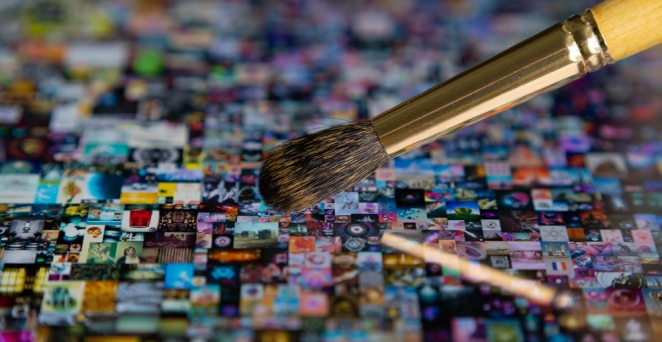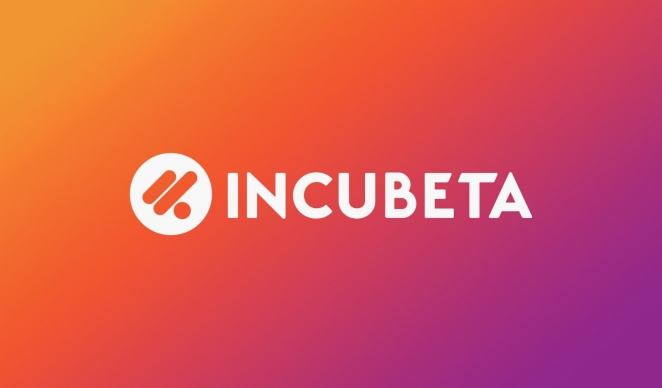The way people consume information and entertainment has changed a great deal over the past decade or so.
Traditional channels like print, which fell in circulation by 55% between 2010 and 2020, are no longer the places where consumers look to keep themselves occupied on the commute, in a waiting room, or by the fireplace. So, why, in advertising, are so many creative concepts still built around traditional assets?
Putting digital first

With consumers spending the majority of their time online and brands themselves now spending around 50% of their marketing budgets on digital channels, it’s about time that advertisers stop relying on the creative from other more traditional mediums such as print or TV, especially with creativity being so often an afterthought as it is.
Creative should be purpose-built for the digital world, and therefore all creative should be thought about through a digital lens. This way marketers can open the door to far more opportunities, especially when the starting point isn’t a static asset.
The biggest of those opportunities is the ability to put interactivity at the heart of the digital advertising experience you deliver to consumers. And having that interactivity, and a truly engaging experience, has never been more needed for brands after what the world has endured in the past couple of years.
The brands that retained customers have been those that continued engaging with consumers through digital channels. This provided them with experiences to offset the fact that they may not have been able to head outside. These experiences will continue to be key, as the shift in consumer habits is here to stay long after we see the back of the pandemic.
Interacting with the consumer

One of the most effective ways that advertisers can bring interactivity into their digital ads is through the use of augmented reality (AR), which has been an important technology for businesses that still rely heavily on in-person experiences.
For instance, when buying a car, understandably, people want to see the vehicle for themselves and see how all of the features work. A visit to the showroom remains a key part of the sales process in the automotive sector. During the various lockdowns and restrictions we’ve had to endure over the past two years, this became a lot more difficult for people to do prior to purchasing a vehicle.
AR meant that car manufacturers were still able to showcase their vehicles through ads. Consumers could expand the ads on mobile, and ‘see’ the vehicle in front of them through their phone’s camera. They could then move around with their phone, interact with the car, and gain information on the features present in the vehicle.
Although consumers tend to still prefer the in-person elements of their car buying experience, there are now far more people who are comfortable with at least some of their purchase journey occurring in the digital world. So such an experience is vital to have moving forward.
A similar thing was seen in the beauty industry, where consumers were no longer able to get into stores to try on makeup. AR was used by forward-thinking brands to enable consumers to virtually try-on different shades. So, AR offers up several possibilities for advertisers.
Interactivity can also be delivered through things like conversational ads. Often, consumers can have many questions about the launch of a new product or service. Chatbots built within the ad unit enable brands to answer these questions, and these answers can be delivered in a way that reflects the brand’s tone of voice. If a brand has a mascot, for example, the chatbot could deliver answers with the tone of that character.
This can sometimes be seen as being too ‘gimmicky’. But adding interactivity to your ad units makes a significant difference to engagement levels. In fact, interactive units deliver 10 times higher engagement than static ones, so it’s a no brainer really. Higher engagement means you’re delivering better results with the same level of media investment.
Keeping things relevant

Conversational ads can also be an example of dynamic creative, which enables advertisers to serve more relevant experiences to consumers. Like interactivity, personalised creative delivers better results for brands, but doesn’t really work if you are starting from a traditional and/or static asset.
In the past, dynamic creative has been powered by the use of third-party cookies but, with those on the way out, advertisers have to look for alternative ways to deliver this creative – and conversational ads are just one of those avenues.
First-party data is set to become incredibly important to advertisers on the back of the demise of third-party cookies. Therefore, businesses should be prioritising their first-party data – and the first-party data of publishers – to deliver relevant, personalised creative to consumers.
Where that first-party data isn’t available, a contextual strategy can fill the gap and continue delivering a relevant experience to the consumer. Contextual data around location, time of day, weather, and/or the keywords the user has typed in, can be used to serve relevant ads to consumers without knowing any personal information about.
Creating outcomes
It’s imperative that advertisers stop thinking of creativity as being secondary to data and targeting, and understand that everything should be used in conjunction. And, when bringing these creative concepts to the forefront, the starting point should be digital. At the end of the day, both creativity and targeting should be powered by the data you have – whether that first-party, third-party, or contextual.
Approaching creative the right way will bring your advertising campaigns to life, and you’ll quickly be reaping the rewards as a result.

By Anna Jorysz, Display and Creative Director, Incubeta
Header image by Stephen Ludford






